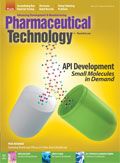Virtualized Infrastructure Takes Hold in Pharma Process Automation
Virtualization has been mainstream in information technology (IT) for decades.
Virtualization has been mainstream in information technology (IT) for decades. One of IT’s biggest challenges is “infrastructure crawl,” caused by servers that, by design, run one operating system and one application at a time, requiring many servers to meet the needs of complex organizations. These single-application servers typically use only a fraction of what the physical server can provide, wasting computing resources across the organization.
Virtualization, however, operates on the principal that more than one operating system and application can utilize the same physical hardware or server host. This approach reduces the physical, power, and cooling footprint required to run an application.
In a traditional computer infrastructure, each physical machine has one operating system running one or more applications and requires labor and expertise to install, maintain, and upgrade. Validation and qualification efforts increase the cost burden. Upgrades in single-server application relationships increase unplanned downtimes.
Virtualized environments (Figure 1) offer multiple virtual machine (VM) servers running on a single hardware server simultaneously. A hypervisor, computer software and firmware, runs VMs while managing physical resources on the host (central processing unit, memory, and network resource). VM host servers maximize resource utilization, because resources are handled and scheduled through the hypervisor.

Most maintenance activities can be performed while the system is running. In the event of a server failure, a VM will automatically migrate to another available host. A virtual environment can be configured to be fault tolerant, with zero downtime during a host failure. Additional benefits include faster backup and data recovery, fewer workstations and servers, and a smaller footprint.
Virtualizing pharma control systems
At its Cambridge, Mass. facility, Biogen was using four distributed control systems (DeltaV, Emerson) in a manufacturing area; each system required its own network topology, server infrastructure, and workstations on the plant floor. In addition, a development environment was used to test new code and functionality changes before it was implemented on the production system. Working with New England Controls, Biogen first implemented a virtualization system for its development platform in 2011, before initiating the conversion of the production systems.
Biogen’s production system featured approximately 60 workstations and 25 physical servers using eight (four redundant) process control networks. Any change had to be repeated on each separate system. To simplify its system, Biogen virtualized one production system at a time, starting with workstation-based computers and moving to the server-class machines.
Approximately one-third of Biogen’s workstations were transitioned from 500-watt systems to clients that require 30-60 watts and use remote desktop and terminal services.
Next, the production systems were virtualized one-by-one, and a manufacturing execution system (Syncade Suite, Emerson) was installed at the same time. The company plans to virtualize all servers by the end of 2015, except for a few workstations on the plant floor.
Realized savings and benefits
Biogen estimates that the transition from 25 servers to five servers delivers annual cost savings of $13,072. The automation team can view the management console from any location, and if an application is not performing well, can review the performance statistics and provide more processing or memory power to the VM. To upgrade the automation and manufacturing execution systems, new VMs are loaded via USB drive and changes are made transparent to the end users and applications, without additional hardware or software.
Article DetailsPharmaceutical Technology
Vol. 39, No. 5
Pages: 51
Citation: When referring to this article, please cite it as M. Daniels and M. Kalvaitis, “Virtualized infrastructure takes hold in pharma process automation,” Pharmaceutical Technology 39 (5) 2015.

PacBio Chosen as Tech Partner for Global Alzheimer’s Disease Research Project
April 23rd 2025The project, the North African Dementia Registry, will unite multiple entities for the purpose of developing a comprehensive dataset to advance the research community’s understanding of Alzheimer’s disease and other dementias in diverse populations.
Drug Solutions Podcast: A Closer Look at mRNA in Oncology and Vaccines
April 30th 2024In this episode fo the Drug Solutions Podcast, etherna’s vice-president of Technology and Innovation, Stefaan De Koker, discusses the merits and challenges of using mRNA as the foundation for therapeutics in oncology as well as for vaccines.